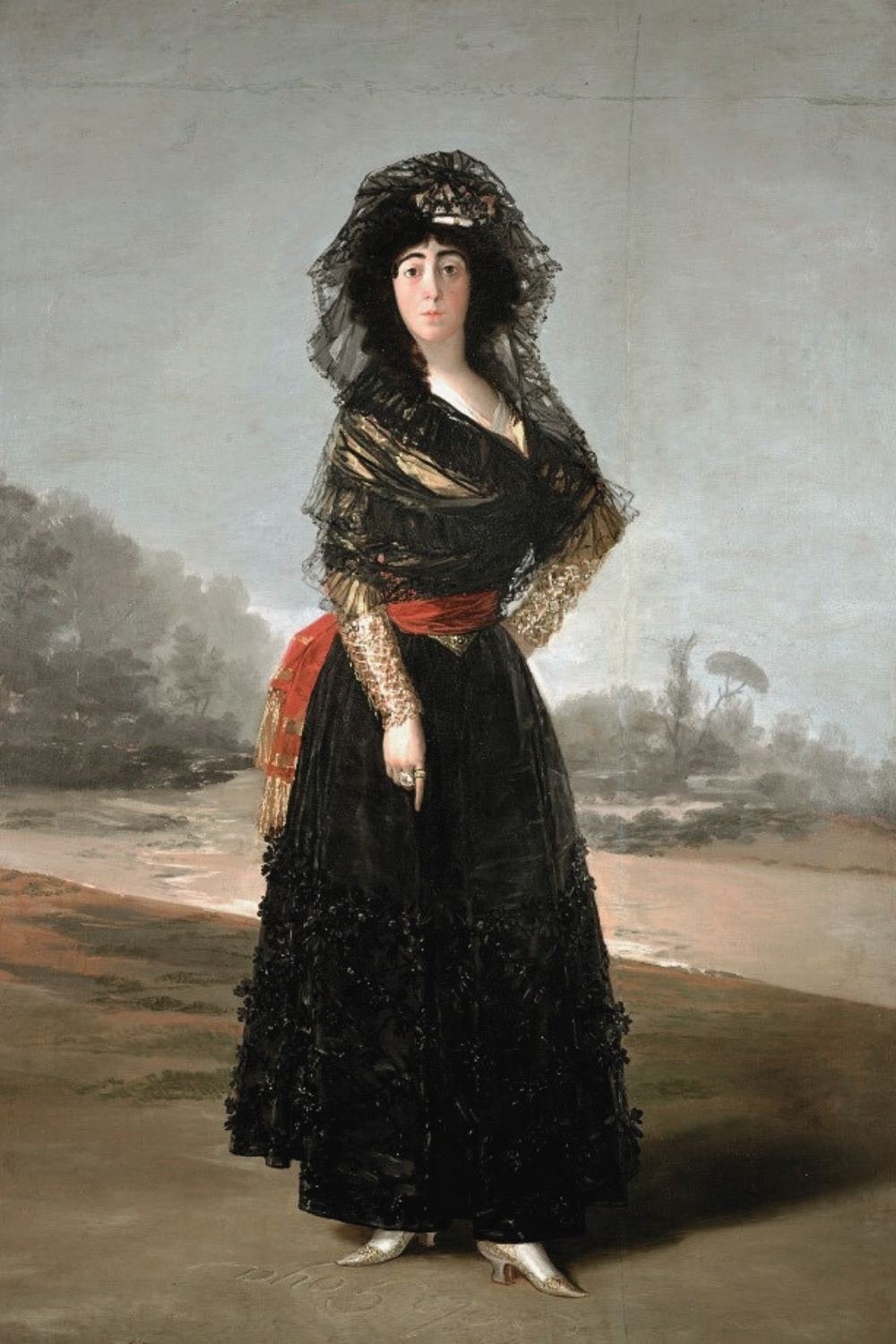New York, Hispanic Society of America
María del Pilar Teresa Cayetena de Silva Álvarez de Toledo, 13th Duchess of Alba (1762–1802), was, after Queen María Luisa, the first lady of Spain. She was also considered one of the most beautiful and captivating women of her day. British traveler Lady Holland wrote that she had it all: ‘beauty, popularity, grace, riches and nobility.’ She was worshipped, envied and the subject of endless gossip. It was said that men traveled to Spain just to catch a glimpse of her, and that Goya too fell for her charms.
You can buy Goya’s unique works with poster and canvas printing options: Goya Art Prints
Goya first painted the duchess in 1795 and around the same time he wrote to a friend: ‘the Alba woman … yesterday came to the studio to make me paint her face, and she got her way; I certainly enjoy it more than painting on canvas, and I still have to do a full-length portrait of her.’ After her husband’s death in 1796, the duchess invited Goya to her estate in Andalusia where he stayed for several months and completed this painting.
At the time, Goya was Spain’s leading painter, despite being completely deaf since an illness five years earlier. Over his long career he worked for four successive monarchies, but his early light-hearted Rococco style would slowly transform after his illness to a distinctively dark, pessimistic vision that looked forward to 19th-century Romanticism and Realism. Goya was in many ways the last old master and the first artist of the modern world; and this portrait teeters somewhere between the two.
Goya’s had three principal influences: the elegant, fluid style of Velázquez; Rembrandt’s honest, insightful portraits; and nature itself. In this work he also displays his knowledge of contemporary British portraiture, particularly the full-length female portraits by artists like Gainsborough and Reynolds. However, instead of placing his sitter in a bucolic landscape, the duchess stands before the dry Andalusian landscape of her own lands in Southern Spain.
With a confidence that borders on bravado, the duchess stands arm akimbo, one foot forward. Proud and poised, she requires no props to reveal her status and forceful character. She looks directly at the viewer with dark Bette Davis eyes, rosy lips, bushy eyebrows and a large beauty mark (considered a symbol of a passionate nature) next to her right eye. Like many Goya portraits, the face is finely executed and stands out from the more freely painted style of her surroundings and dress.
Wearing a black skirt and lace mantilla with a shimmering golden blouse and red sash underneath, she is dressed as a ‘maja’ – a peasant woman, a style that reflected both her character and politics. This style was considered fashionable, daring and sexy when worn by an aristocrat; all adjectives that well suited the duchess. She was also a leading figure of a faction that promoted the traditions of Old Spain in opposition to the popularity of the ideas and fashions of the French Enlightenment and Revolution in Spanish society.
On her hand she wears two rings: upon one is written ‘Alba’; on the second ‘Goya.’ The same finger points to the words, traced in the sand, ‘Sólo Goya’ (Only Goya). The ‘Sólo’ was at some point painted over and was only discovered in 1960 during restoration, adding to the endless speculation about the relationship between the duchess and Goya.
Were they lovers? She was 35, in mourning; Goya was 51, deaf, often saturnine and in poor health. The duchess remained a beauty; Goya was both brilliant and successful. There are also informal drawings from this period of a woman very much like the duchess in various states of deshabillé: did she pose for him? Or did Goya simply use her dark beauty as a prototype? Perhaps it was Goya who was smitten and ‘Only Goya’ was his fantasy, rather than reality. Whatever the case, the duchess never took possession of this portrait and Goya kept it until his death.
Contemporary Works
1796 Antoine-Jean Gros: Napoleon at Arcole, Paris, Musée du Louvre
1799 Jacques-Louis David: Mme de Verninac, Paris, Musée du Louvre
Categories:
- Portraiture

